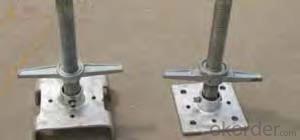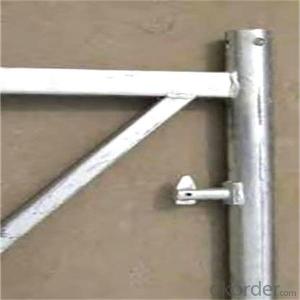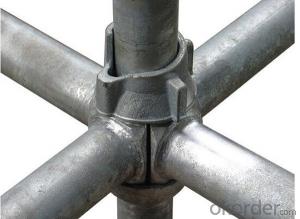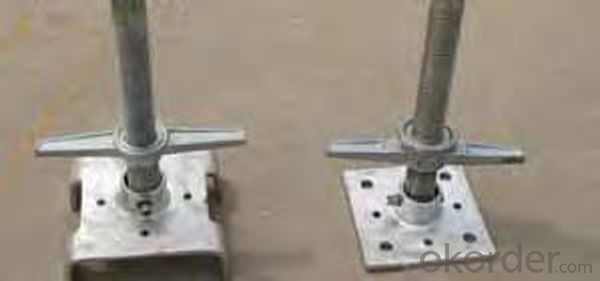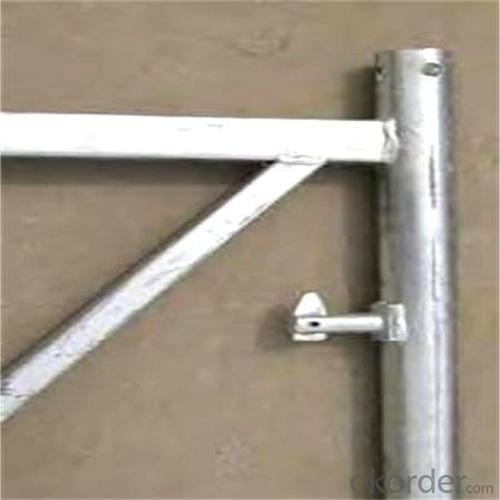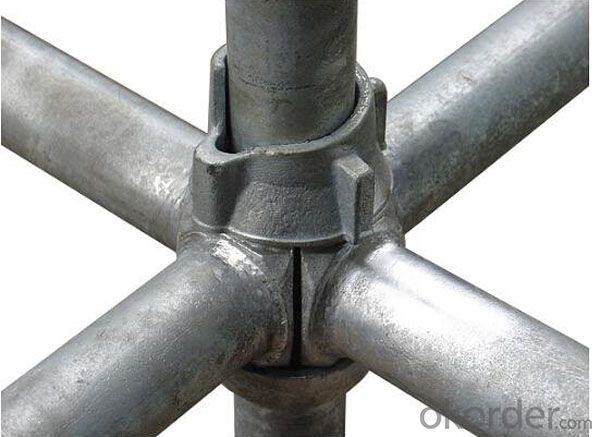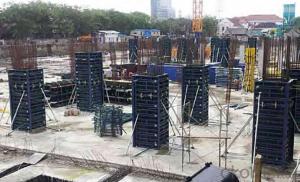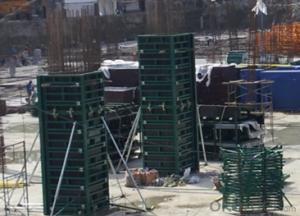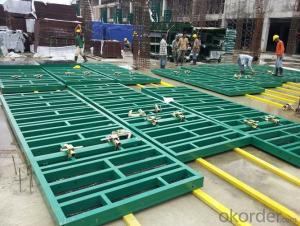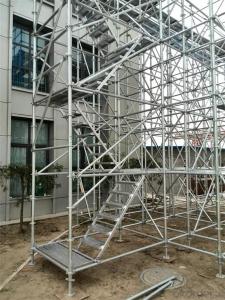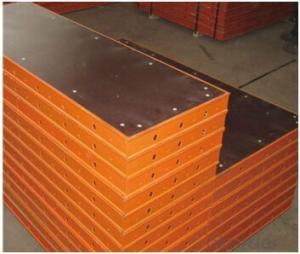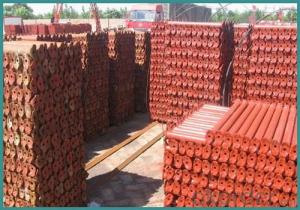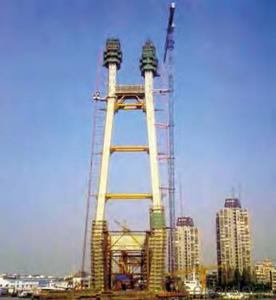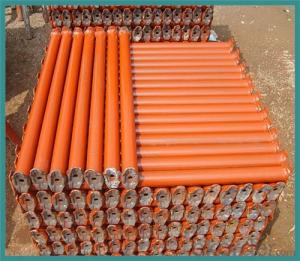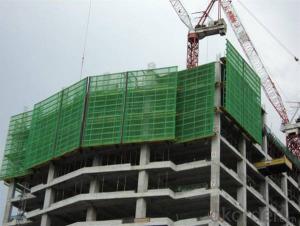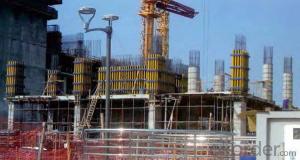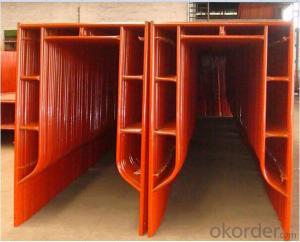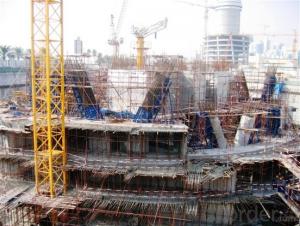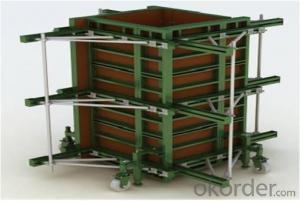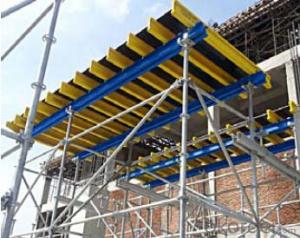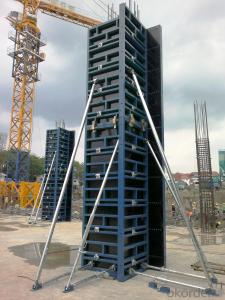Aluminum Scaffolding Beam Formwork Pipe Roll for Scaffolding with Low Price
- Loading Port:
- Tianjin
- Payment Terms:
- TT OR LC
- Min Order Qty:
- 10000 set
- Supply Capability:
- 50000 set/month
OKorder Service Pledge
OKorder Financial Service
You Might Also Like
Aluminum Scaffolding Beam Formwork Pipe Roll for Scaffolding with Low Price
Scaffolding Screw Jack Formwork Scaffolding China Low Price
Developing with new technology materials, steel formworks is no longer a must in construction concrete process. More and more buildings are established with plastic formworks. And workers love this new formworks much more.
The advantages of plastic formworks:
Scaffolding Screw Jack Formwork Scaffolding China Low Price
1.First of all--light
Yes it is the first advantage of plastic formwork. It wins the great praise of both contractors and workers.
The biggest panel is 120×1500px,weights 10.5kg only. It can be lift and set up by one person easily, which means there is no need for cranes on site.Saves a lot of cost and time.
2.Easy set up
Different size of panels can firmly locked by simply turn the special handles to 90 degree. The Panels has rib on the back, which makes the system need not traditional wood blocks and nails. The panels have holes to fit tie rod, guarantee the strength of the whole system.
3.Modularity
Modular formworks composed by different size of panels,the main item is 120×1500px panel,which is used for the large area of walls and slabs. There are also small size of panels like 10×1500px,20×1500pxcm,25×1500px,inner corner 20×20×1500px and outer corner 10×5×1500px.Due to the variety of panel size, the system can form almost all size walls 120×1500px panel of multiply by 125px. The material of modular formwork is PC-ABS mixed with special glass fibers which enable panels to hold high pressures.
4.Strength
The handles are made by high strength Nilon, each panel locked by at least 4 handles, which makes the whole system strong enough to pour 1000px walls.
Aluminum Scaffolding Beam Formwork Pipe Roll for Scaffolding with Low Price
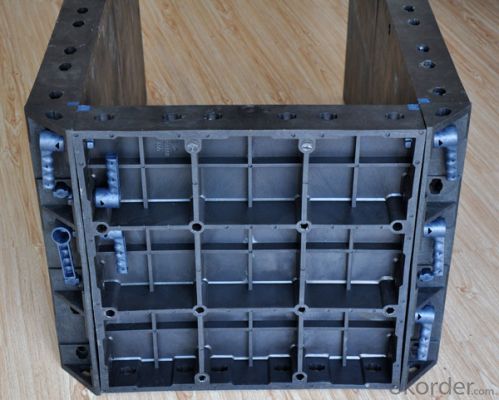
Aluminum Scaffolding Beam Formwork Pipe Roll for Scaffolding with Low Price
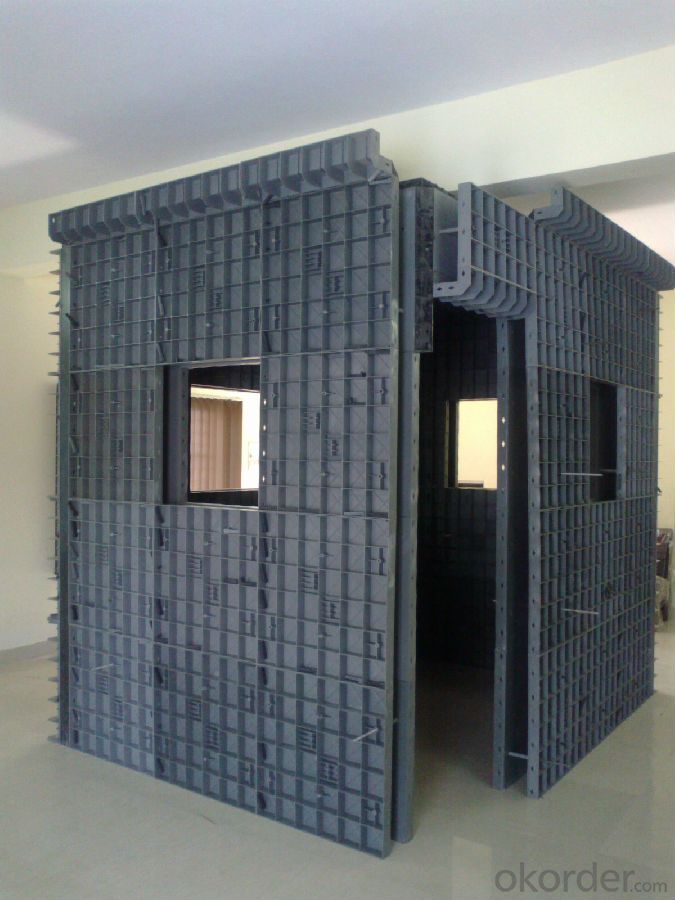
Aluminum Scaffolding Beam Formwork Pipe Roll for Scaffolding with Low Price
- Q: What are the different surface treatments available for steel frame formwork?
- Some of the different surface treatments available for steel frame formwork include galvanization, painting, powder coating, and epoxy coating.
- Q: How does steel frame formwork handle concrete pouring in earthquake-prone areas?
- Due to its inherent strength and flexibility, steel frame formwork is a highly effective method for managing concrete pouring in earthquake-prone areas. This is because the steel frame provides a strong and sturdy structure that can endure the forces exerted during an earthquake, thus guaranteeing the safety of the concrete pour and the overall stability of the building. An important advantage of steel frame formwork is its capacity to absorb and disperse the energy produced by seismic activity. The steel frame functions as a robust and inflexible support system, evenly distributing the seismic forces throughout the structure. Consequently, this diminishes the impact on the concrete pour and reduces the risk of substantial damage. Moreover, steel frame formwork is designed to be easily adjustable and adaptable, allowing for swift modifications to the formwork system as necessary. This adaptability is crucial in earthquake-prone areas where the ground conditions and the intensity of seismic activity can vary. It guarantees that the formwork can be altered to accommodate any changes or adjustments required during and after an earthquake, without compromising the integrity of the concrete pour. Furthermore, steel frame formwork is highly durable and long-lasting, making it a perfect choice for use in seismic zones. The strength and resilience of steel enable it to withstand the repetitive loading and shaking caused by earthquakes over an extended period. This durability ensures that the steel formwork can endure multiple seismic events, providing a dependable and secure solution for concrete pouring in earthquake-prone areas. In conclusion, steel frame formwork provides a robust and flexible solution for managing concrete pouring in earthquake-prone areas. Its strength, adaptability, and durability make it an excellent choice for handling the seismic forces generated during earthquakes, thus ensuring the safety and stability of the concrete pour and the overall structure.
- Q: Can steel frame formwork be used in projects with limited construction site supervision or management?
- Steel frame formwork is a versatile and durable solution for creating concrete structures, making it suitable for projects with limited construction site supervision or management. Its robustness allows it to withstand heavy loads and extreme weather conditions, ensuring stability even without constant supervision. Moreover, the ease of assembly and disassembly of steel frame formwork facilitates quick installation and removal, reducing the need for skilled labor and speeding up the construction process. Additionally, its adjustability and customization capabilities enable construction teams to modify the formwork system without extensive supervision or guidance. Furthermore, the high reusability of steel frame formwork minimizes the need for constant supervision or management in terms of material procurement. This means that even with limited supervision on-site, the formwork system can be reused multiple times. However, it is important to note that proper installation and usage of steel frame formwork still require some level of expertise and knowledge. Therefore, it is advisable to have at least some level of supervision or management to ensure correct implementation. In conclusion, steel frame formwork is a suitable option for projects with limited construction site supervision or management. Its durability, ease of assembly, flexibility, and reusability make it a reliable choice. However, it is crucial to ensure that there is still some level of expertise or guidance to ensure proper installation and usage.
- Q: Can steel frame formwork be used for both low-rise and high-rise buildings?
- Yes, steel frame formwork can be used for both low-rise and high-rise buildings. Its strong and durable nature makes it suitable for supporting concrete during construction, regardless of the building's height.
- Q: Can steel frame formwork be used for curved structures?
- Yes, steel frame formwork can be used for curved structures. The flexibility and strength of steel make it suitable for creating curved shapes in formwork systems. Steel can be easily bent and shaped to match the desired curve, allowing for the construction of curved structures with precision and stability.
- Q: How does steel frame formwork compare to other types of formwork in terms of speed of construction?
- Steel frame formwork is generally considered to be faster in terms of construction compared to other types of formwork. This is because steel frames are pre-fabricated and can be easily assembled and disassembled, allowing for quicker and more efficient construction processes. Additionally, steel frame formwork provides a high level of strength and stability, enabling faster pouring and curing of concrete. Overall, the use of steel frame formwork can significantly expedite the construction timeline compared to other formwork systems.
- Q: What are the different types of concrete vibrators used with steel frame formwork?
- Steel frame formwork can be used with various types of concrete vibrators. These include: 1. Internal Vibrators: Commonly known as poker vibrators, these are the most frequently used type of concrete vibrator. They are inserted vertically into the concrete pour and vibrate at high frequencies, increasing the fluidity and compactness of the concrete. Depending on the project's requirements, internal vibrators can be powered by electricity, pneumatic devices, or petrol. 2. Surface Vibrators: These vibrators are employed to consolidate the upper layer of concrete in horizontal applications such as slabs or pavements. They are usually handheld and moved across the concrete surface to ensure proper compaction. 3. Formwork Vibrators: Specifically designed to be attached to the steel frame formwork, these vibrators are often used in large-scale projects where a significant amount of concrete needs to be poured rapidly. Electric or hydraulic-powered, formwork vibrators are mounted on the formwork itself, providing efficient vibration throughout the entire structure. 4. Vibrating Tables: These tables are used to consolidate concrete in precast applications, such as the production of concrete blocks or panels. The concrete is placed on a vibrating table that shakes at high frequencies, guaranteeing compaction and eliminating air voids. The choice of concrete vibrator for steel frame formwork depends on specific project requirements, including the size and thickness of the concrete pour, desired compaction levels, and available power sources. It is crucial to select the appropriate vibrator to ensure proper concrete consolidation and achieve the desired structural integrity.
- Q: What are the different types of formwork stripping methods used with steel frame formwork?
- There are several different types of formwork stripping methods that can be used with steel frame formwork. 1. Crane Stripping: This method involves using a crane to lift the formwork panels and remove them from the structure. It is a quick and efficient method, especially for larger projects where multiple formwork panels need to be removed at once. 2. Manual Stripping: Manual stripping involves manually removing the formwork panels from the structure. This method is often used for smaller projects or areas where a crane cannot be easily accessed. It requires more labor and time compared to crane stripping. 3. Hydraulic Stripping: Hydraulic stripping is a method that uses hydraulic systems to remove the formwork panels. This method is commonly used for tall structures or areas where manual stripping is not possible. It provides a controlled and precise stripping process. 4. Automatic Stripping: Automatic stripping is a more advanced method that uses mechanical systems to remove the formwork panels. This method is often used for large-scale projects with repetitive formwork stripping requirements. It helps to enhance productivity and reduce labor costs. 5. Panel Stripping: Panel stripping is a method where individual panels of the formwork are removed one by one. This method is commonly used for projects with complex geometries or where specific areas of the structure need to be stripped before others. Each of these formwork stripping methods has its advantages and disadvantages, and the choice of method depends on factors such as the project size, complexity, accessibility, and budget. Selecting the appropriate stripping method is crucial to ensure efficient and safe formwork removal during the construction process.
- Q: Can steel frame formwork be used for both horizontal and vertical concrete elements?
- Yes, steel frame formwork can be used for both horizontal and vertical concrete elements. Steel frame formwork is versatile and can be easily adjusted and customized to accommodate different shapes and sizes of concrete elements. It provides excellent strength and stability, making it suitable for both horizontal slabs and vertical walls or columns. Additionally, steel frame formwork is highly durable and can be reused multiple times, making it a cost-effective solution for various construction projects.
- Q: How does steel frame formwork handle the placement of fire-rated barriers and partitions within the concrete structure?
- Steel frame formwork provides a robust and efficient solution for the placement of fire-rated barriers and partitions within a concrete structure. With its strong and durable nature, steel frame formwork ensures the accurate positioning and alignment of these fire-rated elements. The rigid framework allows for precise installation, ensuring that the barriers and partitions are securely embedded within the concrete structure, providing reliable fire protection. Additionally, steel frame formwork allows for easy adjustment and modification when necessary, making it a versatile choice for incorporating fire-rated barriers and partitions into the concrete structure.
Send your message to us
Aluminum Scaffolding Beam Formwork Pipe Roll for Scaffolding with Low Price
- Loading Port:
- Tianjin
- Payment Terms:
- TT OR LC
- Min Order Qty:
- 10000 set
- Supply Capability:
- 50000 set/month
OKorder Service Pledge
OKorder Financial Service
Similar products
Hot products
Hot Searches
Related keywords
